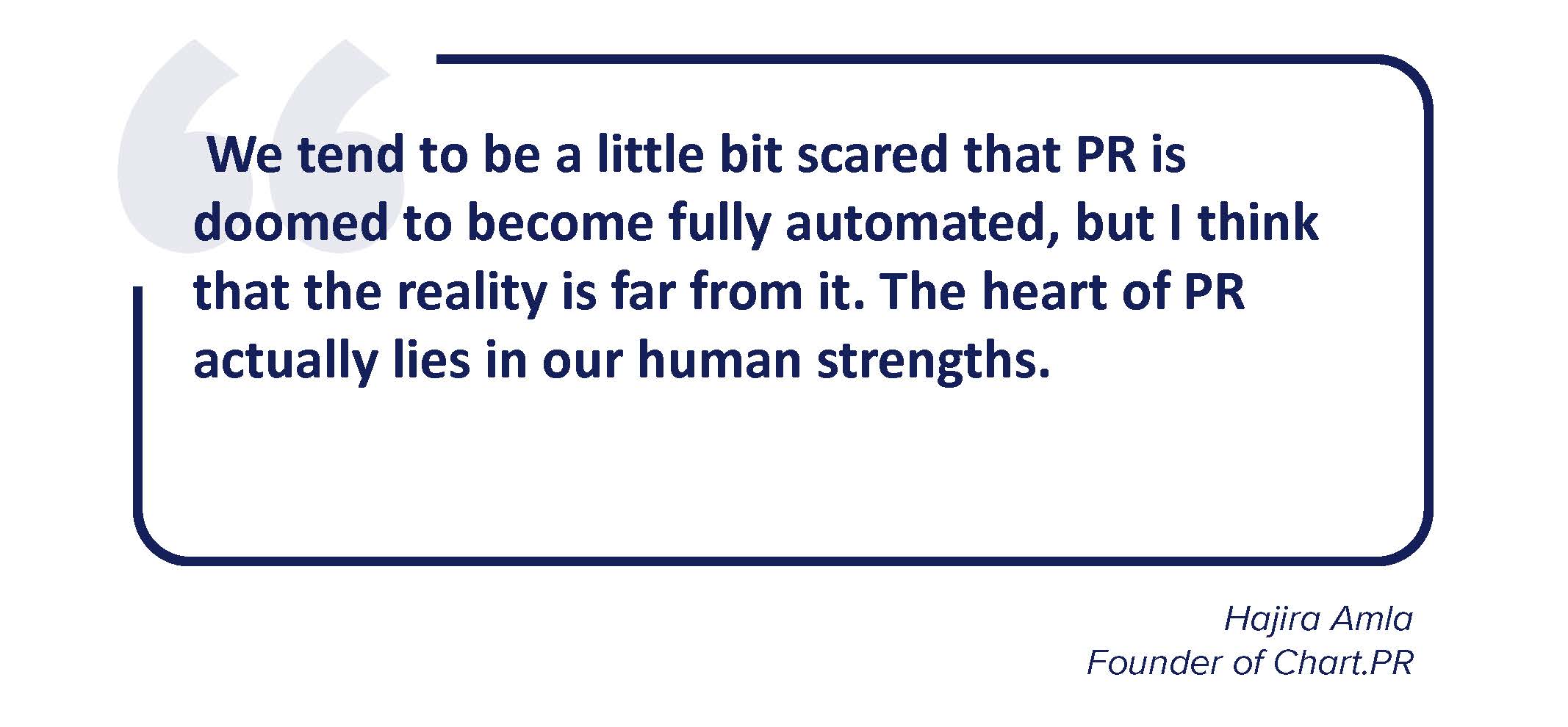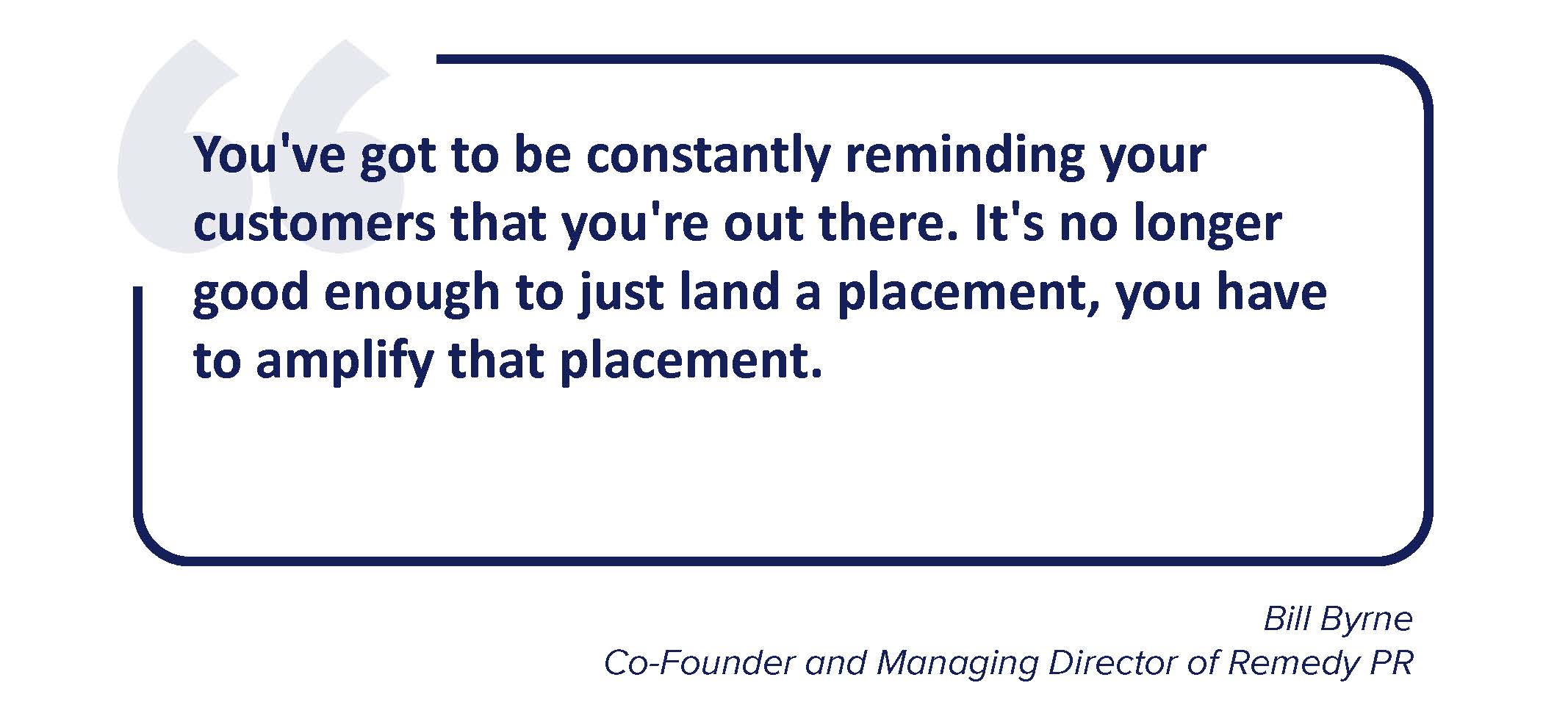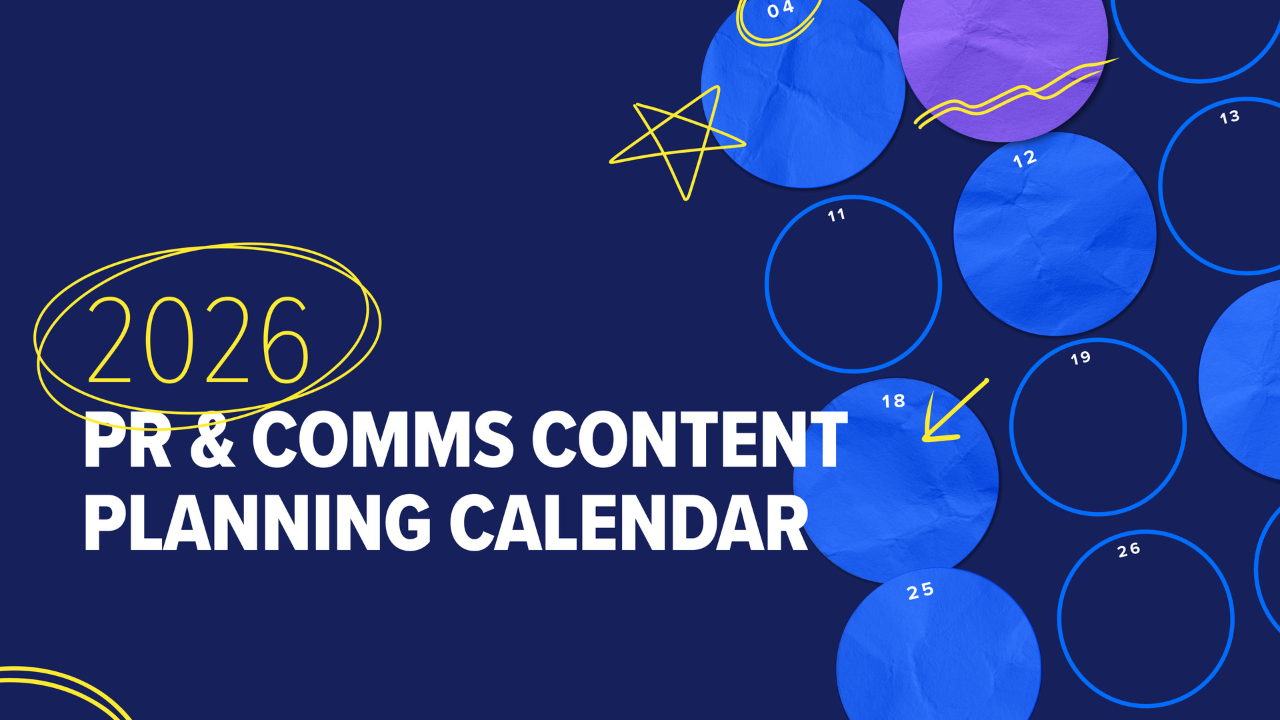The phrase “change is the only constant” rings true for PR and communications professionals who’ve worked in the industry for any length of time. Technology is quickly reshaping public relations, with information traveling faster than ever across myriad publishing platforms.
Given the speed with which we’re moving, what does 2025 have in store for comms teams? During a recent Cision webinar, industry experts came together to discuss this very question.
Hajira Amla, founder of Chart.PR; Michelle Garrett, public relations consultant and founder of Garrett Public Relations; and Bill Byrne, co-founder and managing director of Remedy PR, shared their thoughts with Cision’s Madeleine Luchsinger on the PR trends they expect to see emerge in the next 12 months.
The webinar is available to watch on demand, but if you are short on time, we’ve provided four big takeaways from the panel's anticipated PR trends for 2025.
PR Trend #1: AI Agents and Human Input
AI has already filtered into many PR workflows, either through the tools and platforms used day to day, or proprietary technology developed by brands or agencies. In 2025, we may see the emergence of AI agents, or “virtual assistants” capable of autonomously performing tasks on behalf of a user.
Amla noted that these could come in the form of persona-based research applications. “[PR] practitioners are starting to use AI to build these very specific persona chat bots,” she said. “They're training the AI to have the persona qualities and opinions and feelings that their target audiences may have. They then test messaging on them and gather their feedback instead of conducting more traditional surveys, polls, or focus groups.”
However, Amla and the panel urged caution, noting that while AI offers efficiency gains, there is a risk that human input could become marginalized. Instead, AI should be used strategically rather than replacing core PR functions.
“I have a real passion for writing and coming up with ideas, fleshing them out and working with the client on those ideas,” said Garrett. “I'm a big proponent of positioning clients so that they show up in AI-based search, for example. There's a place for AI, but I think we don't want to rely too heavily on it.”
Amla added: "We tend to be a little bit scared that PR is doomed to become fully automated, but I think that the reality is far from it. The heart of PR actually lies in our human strengths."

PR Trend #2: Crisis Management and Tackling Misinformation
No brand wants to experience a crisis, but they’re a reality of modern PR. Social media has accelerated the speed at which a crisis can escalate, and for Byrne, that means brands need to equip themselves with the right tools to listen out for trouble.
“A lot of brands are like an ostrich, they have their head in the sand and they're not using tools like social listening to really dive in and find out about those back-channel communications that major publishers might not be talking about.”
Byrne cited Reddit as an example of a social media platform that could host consumer discussions that shift from disgruntlement to a full-blown crisis.
The rise of misinformation has also been a key driver of reputational and financial risk for brands. False information can build into a crisis, and in that instance, Garrett discussed the need to “own the message” by ensuring fast responses across social media, corporate blogs, and wire services.
“You need a digital paper trail,” added Byrne. “If you're not going to have a corporate blog, you've got to have somewhere reputable where you have your opinions and facts put out about your brand or initiative. A wire service is a great place.”
One piece of advice that matters above all: ensure you have a crisis plan in place. "I'm always amazed when we talk about crisis, and when I talk to clients about it, often they don't have a plan in place,” said Garrett. “We see now that it's very easy for any organization to find themselves in the midst of a crisis that they probably didn't expect.”
PR Trend #3: Measuring Earned Media Success
As the media becomes increasingly fragmented and legacy publishers continue to downsize, more journalists are turning to independent platforms and taking their audiences with them. This can make media relations more challenging, but there are benefits of outreach to niche publishers.
“A journalist that’s just left a tier A publication, they're not going to have the same reach as The Wall Street Journal or Good Morning America, but their audience is really invested in that content,” said Byrne, noting that a campaign’s success shouldn’t be judged by reach alone.
In terms of metrics to measure the effectiveness of a campaign or pitch, Amla suggested that bigger changes might be occurring not just in PR, but across marketing and sales, too. This all stems from recent chatter around the “death of the MQL (marketing qualified lead)” and what now constitutes success.
“The traditional MQL model is losing relevance as organizations are recognizing the importance, finally, of building long-term brand equity over short-term lead generation. So I think that branding and authentic storytelling should become much more of a priority, and that's a really good thing for PR,” she explained.
“Now we're looking at attention, we're looking at brand awareness and loyalty, and we have to measure that in the PR function. [That means] going back to brand awareness rather than just looking at growth trajectories.”
PR Trend #4: Removing Social Media Silos
Social media continues to be a major focus for PR and communications practitioners, and our panel suggested 2025 may see a greater integration between social media, PR, and content teams, with the goal being to use social for authentic engagement and amplifying earned media success.
“There shouldn't be silos between PR, social, and content. Those teams need to be talking to each other. They need to be leveraging each other's work. Sometimes one might take the lead. Sometimes another might take the lead,” said Garrett.
Byrne added that the “C-suite knows you're doing a good job when people are buzzing about your brand,” making it more important than ever to work across the business to share those earned media wins.
“You've got to be constantly reminding your customers that you're out there. It's no longer good enough to just land a placement, you have to amplify that placement,” he said.

On a broader note, Amla stressed the importance of knowing your audience when it comes to the type of content that resonates on social media. “It's really about understanding how social audiences work, what they want to consume, and what they want to engage with,” she said.
“I think this is a basic thing that a lot of organizations don't do properly. What is it that causes [your audience] grief and frustration? How do you tap into that in the way that you write your content, so that you can really grab attention?”
Final Thoughts
PR continues to evolve so quickly it's difficult to predict exactly where it will go in 2025. New and unexpected trends may surface and others fall by the wayside, but a key theme from this discussion is the need to balance technological change with human expertise. Innovation needs to be embraced, but not at the expense of PR's core purpose, sharing compelling stories that help to build meaningful human relationships.
To learn more about how CisionOne is helping PR and communications teams navigate these trends, speak with an expert.
For the full conversation, watch the webinar on demand.
Most Recent Posts
Cision Resources
-
E-books and Guides
Comprehensive how-to guides on strategy and tactics
-
Case Studies
What are other brands doing – and how can we learn from them?
About Simon Reynolds
Simon is the Senior Content Marketing Manager at Cision. He worked as a journalist for more than a decade, writing on staff and freelance for Hearst, Dennis, Future and Autovia titles before joining Cision in 2022.
Learn More. Do More. demo new
PR Tips, Case Studies, and Product Updates

[On-Demand Webinar] The Next Generation of Media Intelligence: From Gorkana to CisionOne
Explore CisionOne, a revolutionary media intelligence platform, and the evolution of Gorkana. Learn key features and strategies from Luke Williams, CisionOne Product Marketing Manager. Elevate your media outreach to new heights!


